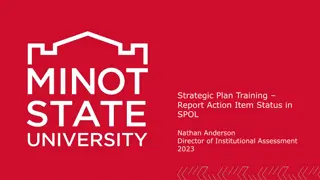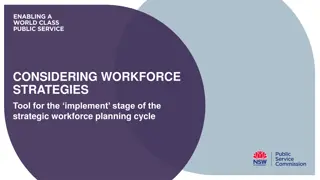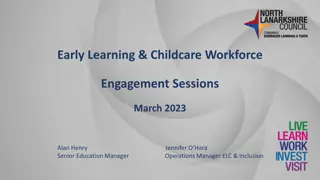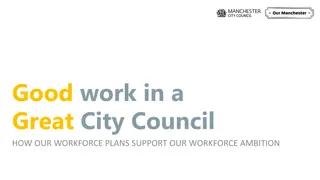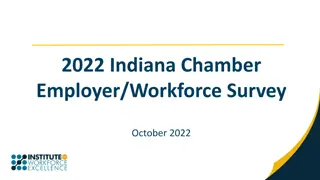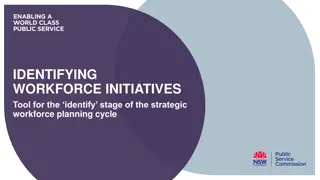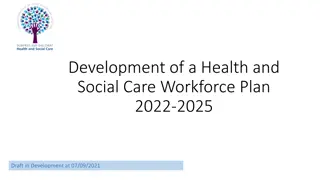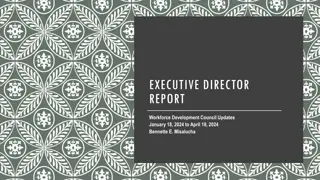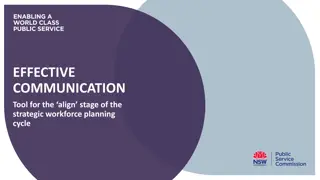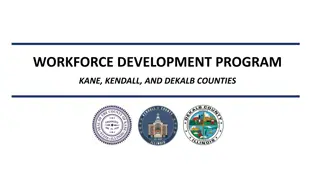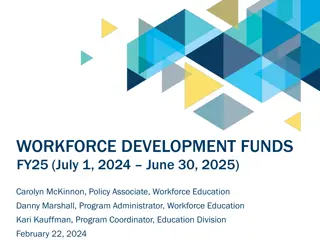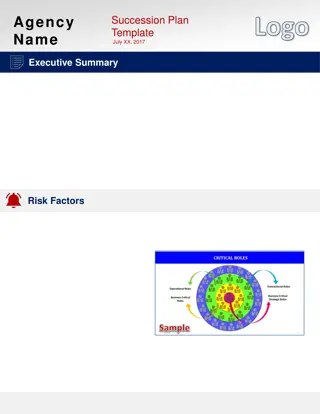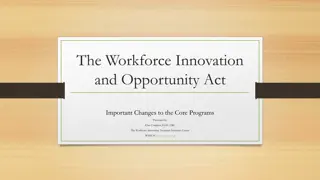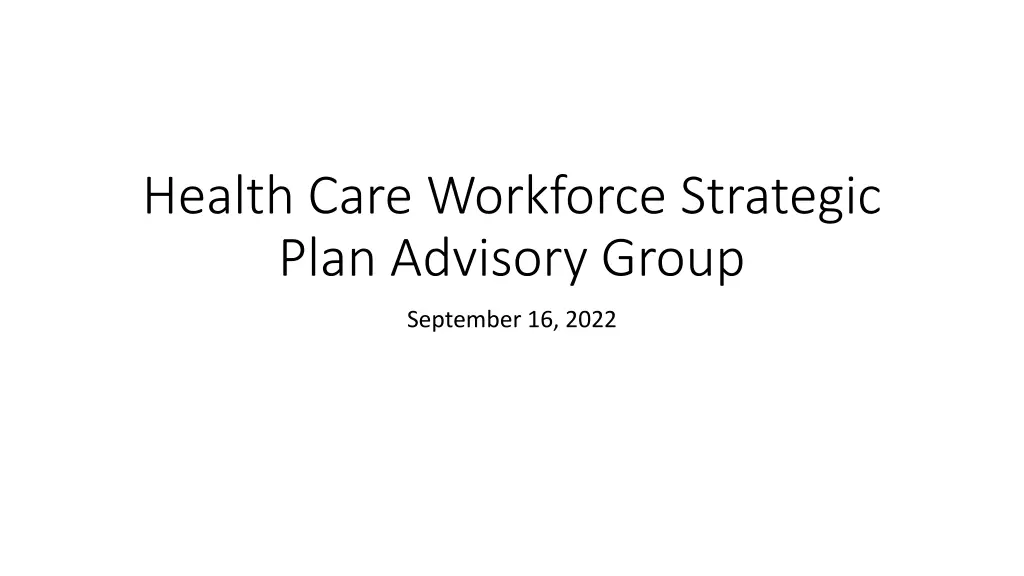
Health Care Workforce Programs Update: Premium Pay and Nursing Pipeline
Stay informed about the latest updates on premium pay programs for health care employers, including funding details and eligibility criteria. Learn about the Nursing Pipeline and Apprenticeship Program aimed at developing higher-level nursing professionals through grants and skill enhancement opportunities. Keep up to date with the initiatives to support workforce recruitment and retention in the health care sector.
Download Presentation

Please find below an Image/Link to download the presentation.
The content on the website is provided AS IS for your information and personal use only. It may not be sold, licensed, or shared on other websites without obtaining consent from the author. If you encounter any issues during the download, it is possible that the publisher has removed the file from their server.
You are allowed to download the files provided on this website for personal or commercial use, subject to the condition that they are used lawfully. All files are the property of their respective owners.
The content on the website is provided AS IS for your information and personal use only. It may not be sold, licensed, or shared on other websites without obtaining consent from the author.
E N D
Presentation Transcript
Health Care Workforce Strategic Plan Advisory Group September 16, 2022
Premium Pay for Workforce Recruitment and Retention Program Update (1 of 2) $60M in funding was appropriated through Act 83, Sec. 72 using multiple funding sources (HCBS FMAP, SFR funds, and general fund). Eligible employers included: Assisted living residences, Nursing homes, Residential care homes, Home health agencies, Designated or Specialized Services agencies, A substance use treatment provider in the Department of Health s preferred provider network, Recovery center, Adult day service provider, Area agency on aging, Program licensed by the Department for Children and Families as a residential treatment program.
Premium Pay for Workforce Recruitment and Retention Program Update (2 of 2) Initial payments were made beginning in June 2022. $32.4 M was awarded to 132 eligible employers. ~$900,000 in additional funds may be awarded, pending completion of outstanding issues by applicants. 74 applicants elected to either receive a one-time single lump sum payment to disburse over 90 days; 58 applicants elected to receive quarterly payments to disburse by June 30, 2023. A second round of funding will be available for additional health care and social service providers with a demonstrated need for the funding. AHS has received and welcomes additional input on provider types, criteria for demonstrating need, and funding uses. Note: funding uses will need to align with federal SFR funds requirements.
Health Care Employer Nursing Pipeline and Apprenticeship Program (1 of 5) Act 183, Section 22 appropriates $2.5M of SFR Funds to provide grants to health care employers to establish or expand partnerships with Vermont nursing schools to create nursing pipeline or apprenticeship programs, or both, that will train members of the health care employers existing staff, including personal care attendants, licensed nursing assistances, and licensed practical nurses, to become higher-level nursing professionals. Health care employers is defined as hospitals, long-term care facilities, designated and specialized service agencies, federally qualified health centers, and other health care providers.
Health Care Employer Nursing Pipeline and Apprenticeship Program (2 of 5) SFR Funds can be used for enhancement of health care capacity to mitigate and prevent COVID-19. Funds will be used to upskill health care employees, including PCAs, LNAs, and LPNs, to become higher-level nursing professionals. Funding will cover trainee s tuition and fees at Vermont nursing schools. Health care providers receiving grants will be expected to make contributions to assist trainees in meeting their living costs, such as housing and childcare, while attending the program.
Health Care Employer Nursing Pipeline and Apprenticeship Program (3 of 5) Advisory Group members provided initial input on AHS questions about program design. Input from 8 respondents included: In addition to the health care employers described in the statute, primary care practices, pediatrics practices, and oral health practices should be eligible. There are models for successful partnerships between health care providers and Vermont nursing schools today. Respondents described partnership pipelines, apprenticeship programs, clinical rotations, and scholarship programs with a variety of Vermont educational institutions, as well as other schools in the Northeast, online programs, and high schools. These can include pre-nursing pipeline programs and long-term care apprenticeship programs. It was noted that partnerships are needed at more provider types.
Health Care Employer Nursing Pipeline and Apprenticeship Program (4 of 5) Respondents noted challenges such as: Resource challenges with running apprenticeship programs. Insufficient nurse educators (lack of competitive pay) and nursing program slots. Not all providers will be able to participate financially, which is a requirement of the program. This includes some of the hospital respondents. From the perspective of nursing schools, students have left programs due to the need for financial assistance. Hospital respondents noted some staff need transportation, housing, childcare, food, family necessities, and uniforms as well as for educational needs such as board exam study support and reexamination funding.
Health Care Employer Nursing Pipeline and Apprenticeship Program (5 of 5) Respondents indicated areas that could benefit from state support and coordination. These include: Program administration, Centralization to help manage programs across the state or funding for onsite coordination of the program Fostering connections between schools of nursing and facilities, A centralized clinical placement system for all educators and employers, Information about available resources and economic supports for employees in the pipeline.

